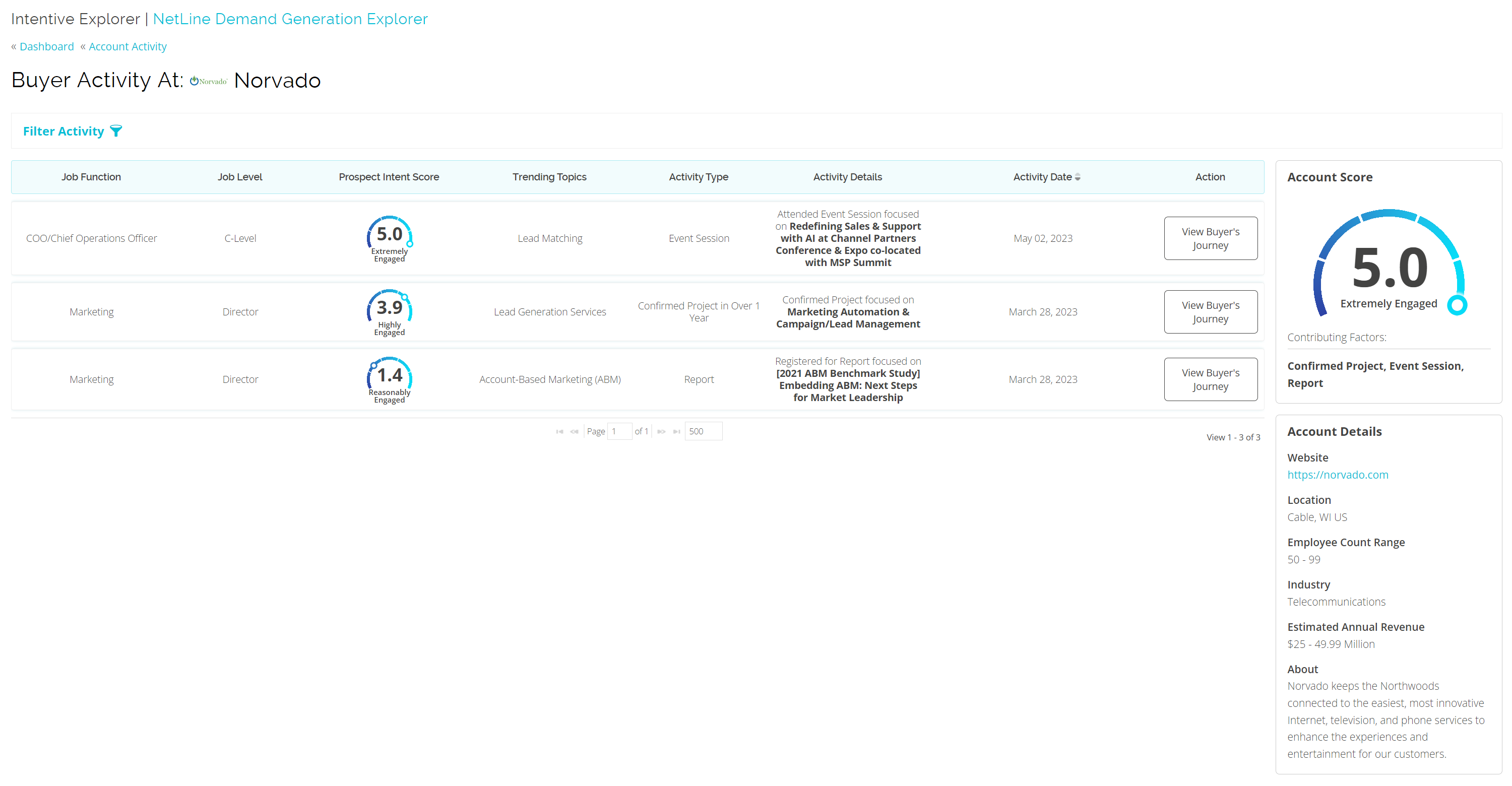The pain B2B demand gen marketing pros experience whenever sales fails to act on leads or dismiss them prematurely can be quite painful.
Sales, conversely, pulls its collective hair out whenever marketing overpromises and underdelivers on quality buyer-level information. It’s a tango that has resulted in many stepped-upon toes and many unrequited opportunities.
So why does this happen?
Aside from any cliches about sales and marketing alignment, there are two key factors that need fixing before any significant improvement in outcomes.
- The first factor is the handover of qualified leads and accounts to sales.
- The second deeply-connected factor is the quality of the data that marketing is providing sales—because if that’s not good enough, even the most tightly refined handover process will fail to gain traction with reps.
Why the handover to sales is vital to get right
In an ideal world, the marketing team should be continuously engaged in both creating and capturing demand. When done effectively, this will generate high-quality leads and accounts that are in-market, showing intent, and are already primed to buy at the exact time of the handover.
In this ideal scenario, when these leads are finally handed off to sales, reps can effortlessly convert them using all the valuable and informative data marketing has collected on each lead.
That handover process between marketing and sales is crucial. When done properly, marketing is giving sales exactly what they need and supplying them with valuable data, enabling them to make a very personalized approach. But when the handoff falls short of the mark, it can be disruptive to the sales process and result in a poor customer experience.
Indeed, research shows that about one-fifth of B2B marketing and sales professionals say that the lead hand-off process is one of the top factors that contribute to a disjointed customer experience.
While B2B marketers understand the importance of the sales handover, many are still struggling with the process. In fact, one-third of marketing professionals identified improving the marketing and sales handoff when asked what their top priorities were to improve lead-to-opportunity conversion.
What are some common challenges during the handover and sales process?
Both marketing and sales teams can experience numerous challenges that can get in the way of a successful handover. Here are just a few that need to be addressed before a handover can be as effective as possible.
Lack of communication, understanding, and alignment between sales and marketing teams
Marketing and Sales have always struggled with alignment and while many organizations have strived to close the divide between departments, research has found that merely one-third can boast that they are fully aligned.
Not identifying the real people within in-market accounts
This is perhaps the most significant challenge marketers encounter.
Knowing the “who” can have a significant impact on whether a marketing-qualified lead converts into a sales-accepted lead.
In some respects, the marketing function has a decent chance of identifying named and qualified leads, given the growing size of today’s buying committee. Some 59% of B2B buyers claim that there are at least four people involved in their organization’s buying process, with about one-quarter having at least seven people on their buying committee.
But when marketing provides a list of target customers without any named contacts, they are relying on the sales team and their sales processes to do more of the heavy lifting.
Marketing-sourced leads and accounts don’t convert to meetings—leading to sales sidelining the contacts and accounts that are given to them

A UFO handing over a qualified, validated lead generated through using first-party intent data with an astronaut picking it up.
Following on as a likely consequence of lacking named buyers is that sales reps can’t book any meetings from them. One of the biggest complaints sales teams have with leads coming from marketing is that they are poor quality and lack a readiness to buy.
If marketing has a track record of supplying leads and accounts that don’t convert, sales will have no choice but to lose trust in the leads they are being given.
Even worse, a poor track record can stop sales from believing that they don’t need marketing at all.
Duplicated efforts as sales and marketing target the same accounts and buyers without a joined-up approach
When sales reps feel that marketing isn’t contributing to revenue, they are more likely to start prospecting to accounts that marketing is in the middle of nurturing.
But even when there’s mutual respect between sales and marketing teams, there are other reasons why both teams might reach out to the same target buyers, leading to a bad experience for the buyer.
Examples can include:
- Limited sharing of first-party data and buyer insights;
- Poorly integrated or configured systems, especially between the CRM and marketing automation platforms;
- Marketing fails to align with an existing and standardized sales process; and
- At a most basic level, a lack of effective communication—meaning that neither team is aware of the activity being done by the other.
These areas all fall within the wider context of sales and marketing alignment.
Reliance on third-party data which is often incomplete or inaccurate
There are many data providers on the market today that promise to surface the right accounts by taking advantage of third-party intent data from across the web. These solutions can be valuable, but the marketing team needs to understand the potential limitations.
For example, research has revealed that data quality is the top challenge facing marketing professionals when using intent data. Third-party data, in particular, can often be inaccurate or inadequate when it isn’t used in conjunction with first-party data.
The follow-up by sales reps has a message that doesn’t align with marketing—or isn’t sufficiently personalized
Messaging needs to reach beyond marketing efforts and throughout the sales cycle.
Alongside that, buyers expect personalization. A McKinsey study found that about 7 in 10 people expect personalized interactions from those selling products and services.
If this isn’t done, the handover risks feeling disjointed as sales reps fail to properly communicate with buyers.
Why first-party, buyer-level validated data can help address these challenges and the benefits it has
Fortunately, these challenges can be overcome by taking advantage of first-party data which has been validated at the buyer level.
This type of first-party data should include:
- Person-level data that at the very least includes a name.
- An email address that has been validated via a double-opt-in, proving that it has been opened and clicked by the recipient.
- Data that the person has provided directly, such as sharing their interests and preferences on a form, as well as other contact details such as phone number.
- Intent data that they have provided directly, which can include whether or not they are looking for a solution—and if not now, when in the future that might be the case.
- And where possible, any self-provided data (such as phone numbers) should be verified for its accuracy, either manually or automatically.
Put together, this type of intent data also pinpoints those buyers who are truly in-market and not just browsing content or merely your competitors checking out what you have to offer.
As a result, here are some benefits you can expect to see.
Improved conversion rates from higher-quality data
Accurate, timely, and context-rich data leads to greater success with marketing-generated contacts and accounts.
Having the data on who your buyer is, what they are researching, and what their pains are, makes it easier for sales to accept and qualify that lead. Backed by the right content and messaging, reps can then take a personalized approach. And, once sales sees that marketing is handing over leads that are high-quality and ready to convert, confidence and trust in marketing is bound to see a lift.
Greater trust between the sales team and marketing function
With that increased level of confidence, sales teams will feel more comfortable in leaving marketing to reach out and engage buyers and accounts that aren’t yet in marketing. Leaving marketing to do this reduces the likelihood of duplicated outreach from both marketing and sales as well as decreases the possibility of mixed messaging.
Sales reps can spend more time on the buyers and accounts that matter
The difficulty in identifying the real people within the account is a particular barrier for the handover.
However, when using first-party, buyer-level validated data, sales reps have access to named in-market buyers. This allows them to focus on who is on the buying committee, rather than taking a blind guess. In turn, this allows sales reps to spend more time per account.
Having context on interests and intent also allows for a higher-quality approach from sales. It means greater use of sales enablement tools and content that marketing provides which leads to more effective qualification.
More efficient use of paid marketing spend with greater ROI
Another advantage of buyer-level intent data is that it allows for more efficient and dynamic deployment of paid media.
Considering that recent data from The CMO Survey shows that paid media marketing leaders are allocating the largest share of their digital spending to paid media (44% compared to 34% towards owned media and 11% towards earned media) being able to use those marketing dollars in a way that grabs the attention of the right buyers at the right time in a more precise and personalized way is beneficial.
Marketing delivers a greater impact on revenue
Last, but not least, with marketing able to hand over high-quality leads and vital data about exactly who the buyer is, the end result is that marketing’s contribution to pipeline improves.
How to get started on improving the marketing-to-sales handoff
So, where should one start in making sure that any handover of marketing-generated leads and accounts is as effective as possible?
Here are a few steps you can take to get started.
- Speak to sales reps to understand their workflow, processes, and what’s important to them. Communication is key and is an important step to creating alignment.
- Make sure your marketing automation platform and other technology is properly integrated with your CRM and the sales team workflow to enable a smooth handover. This should include feeding back outcomes to marketing i.e. whether they moved to sales qualified, an active opportunity or were disqualified.
- Surface buyer-level insights within the tools they already use. Naturally, you should have first-party, buyer-level data which sales can use to know exactly who they should be targeting and how. But if this isn’t in their day-to-day tools, chances are adoption will suffer. Make sure it’s embedded within the CRM or any sales tech they spend most of their time in.
- Display recommended content and messaging based on buyer-level behavior, buying stage and account-level insights. A majority of B2B buyers say that a vendor’s content had a significant impact in ultimately choosing that vendor. But not any content or messaging will do. It needs to be geared specifically towards that particular buyer and where they are in their journey which has been revealed through the rich first-party intent data you have collected.
- Get feedback from sales to further improve and optimize the handover. Keep the conversation going. Asking for feedback and input on the handover process can only strengthen marketing’s relationship with sales.
How to source validated leads with intent right now
If you’re in need of named buyers to give to your sales team or contacts that you can nurture until they are ready to buy, NetLine’s buyer engagement platform is a great place to start.
NetLine offers lead generation services beginning at just $4 per lead alongside its unparalleled buyer-level intent platform, INTENTIVE. When used in conjunction, you’ll be equipping your sales and marketing teams with the actionable contact data of their dreams.

